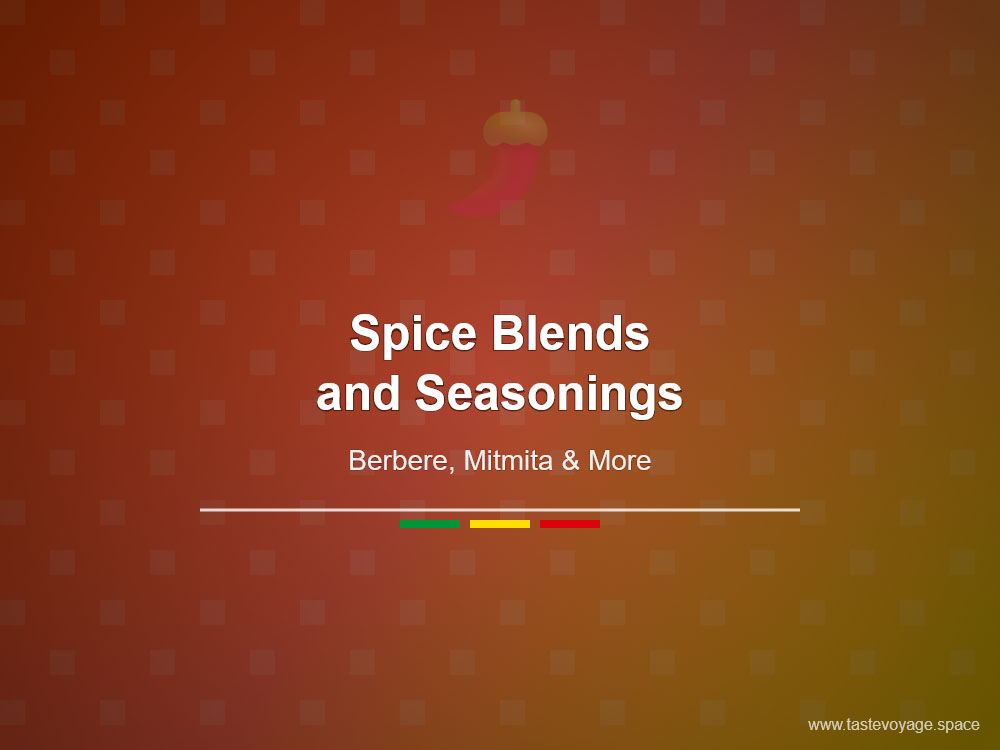Master the Art: Perfect Ethiopian Spice Blending Methods
Travel the World Through Food >> Ethiopian Cuisine>>Spice Blends and Seasonings>> Master the Art: Perfect Ethiopian Spice Blending Methods
Master the Art: Perfect Ethiopian Spice Blending Methods
Introduction to Ethiopian Spice Blending
Ethiopian Cuisine is renowned for its vibrant flavors, aromatic spices, and rich culinary traditions. At the heart of many Ethiopian dishes lies a carefully crafted blend of spices that elevates each meal from ordinary to extraordinary. The art of blending spices in Ethiopia is much more than a culinary technique; it is a reflection of cultural heritage and a symbol of hospitality. Understanding the perfect methods of spice blending offers insight into the deep-rooted history and unique culinary identity of Ethiopia.
The Cultural Significance of Ethiopian Spice Blends
In Ethiopia, spice blending is a cherished tradition passed down through generations. It embodies the values of community, sharing, and respect for natural ingredients. These spice mixes, often prepared at home, serve as a cornerstone of Ethiopian hospitality, welcoming guests with warm flavors that tell stories of the land and its people. The process of blending spices is considered an art form, where each family may have its own unique recipe, passed from mother to daughter, preserving cultural identity and continuity.
The Key Ingredients and Their Symbolism
Ethiopian Spice Blends typically include ingredients such as berbere and mitmita—complex mixes of chili peppers, garlic, ginger, and other regional spices. These ingredients are carefully selected for their aromatic qualities and cultural symbolism. For example, berbere’s bold, spicy profile represents the vibrant spirit of Ethiopian communities, while mitmita’s fiery heat symbolizes resilience and strength. These blends are not just flavor enhancers; they are expressions of Ethiopia’s natural bounty and rich biodiversity.
Culinary Significance and Versatility
Spice blending in Ethiopia is fundamental to creating a diverse array of dishes, from fiery stews like doro wat to flavorful vegetable dishes. The ability to harmonize spices creates depth and complexity, allowing chefs and home cooks alike to craft dishes with layers of flavor. These blends are integral to the identity of Ethiopian cuisine, showcasing an emphasis on boldness and balance. They also highlight the importance of tradition and the regional diversity within Ethiopia, where each area may have its own distinctive spice profiles.
The Art and Ritual of Blending Spices
Perfect Ethiopian spice blending isn’t just about combining ingredients; it’s about understanding the balance, timing, and harmony. Traditionally, spices are ground using mortar and pestle, a process that requires patience and skill. This ritual emphasizes mindfulness and respect for the ingredients. The resulting blends are often stored in jars, imbued with the essence of the land and the care of the maker. This craftsmanship underscores the cultural value placed on culinary mastery and the sharing of good food.
Preserving a Culinary Heritage
As Ethiopia’s culinary traditions continue to thrive, the methods of spice blending remain a vital link to the past. Preserving these techniques ensures the continuation of Ethiopia’s rich food culture, allowing future generations to experience the authentic flavors that define Ethiopian cuisine. Many culinary artisans and home cooks take pride in mastering the art, viewing it as a cultural treasure worth safeguarding.
Conclusion: Celebrating Ethiopian Spice Blending
Ethiopian spice blending methods are much more than a culinary technique—they are a celebration of culture, history, and community. These blends create the signature flavors that make Ethiopian cuisine unique and inviting. By appreciating the artistry and significance behind these spice mixes, we gain a deeper respect for Ethiopia’s rich culinary fabric. Whether you’re a seasoned chef or an enthusiastic food lover, exploring Ethiopian spice blends invites you to partake in a tradition that honors both nature and human creativity.
